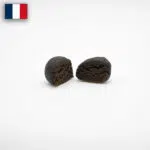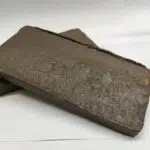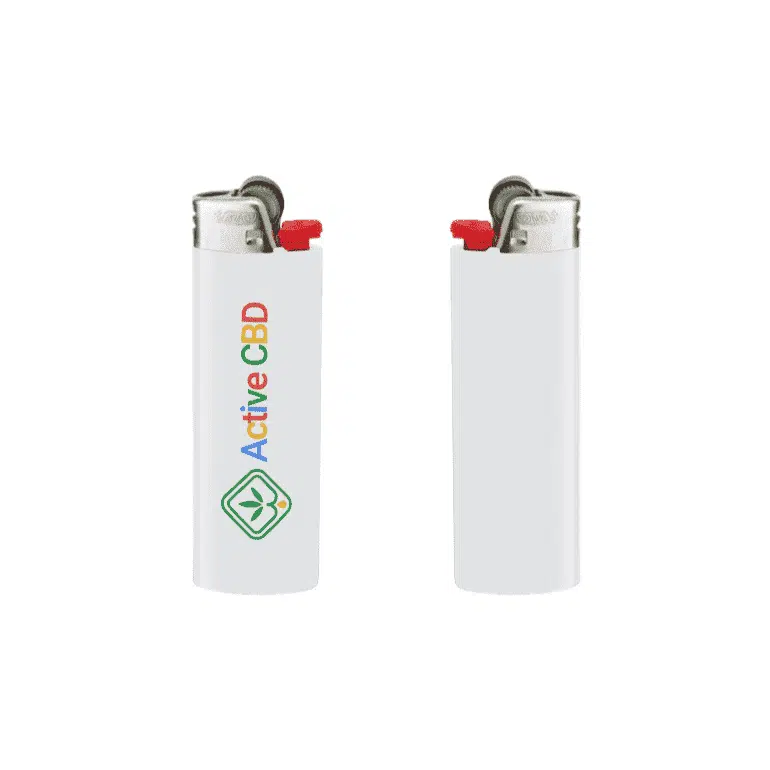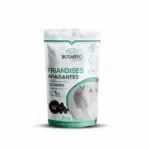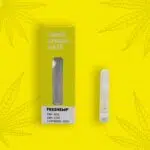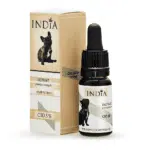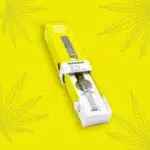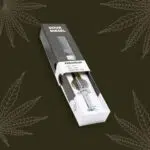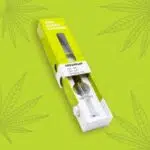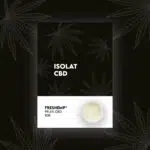The world of cannabidiol and cannabis can sometimes confuse you with its specific terms. Cannabidiol, abbreviated as CBD, is a cannabinoid found in the cannabis sativa plant.
Indeed, CBD is the second most abundant cannabinoid in plants after tetrahydrocannabinol. CBD is a cannabinoid found in cannabis and hemp. The CBD authorized in France must be extracted from the hemp plant and must have a rate< 0.3% THC.
In addition, hemp intended for sale must be part of the authorized crops mentioned in decree 22 of 1990 implementing article R. 5132 – 86 of the cannabis public health code.
Below you will find a selection of explained words that can help you better understand the world of Cannabis, CBD and CBG. Do not hesitate to contact us via email [email protected] in case of questions.
A
B
Cutting: A cutting is a part or a fragment of about 10 cm which is cut from the side branches in order to be replanted. A cutting becomes a full-fledged plant when rooted with the same genetic material as the original plant.
Broad spectrum: Also called broad spectrum, generally means that the oil contains all cannabinoids except THC (Δ-9-tetrahydrocannabinol).
C
CannaBiCromene – CBC: CBC is part of the cannabinoid family. These CannaBiCromene can be isolated with trichomes that can be newly formed from leaves. It has antibiotic, analgesic, anti-inflammatory properties and reduces the side effects of THC.
Cannabinoid: It is a group of chemical substances that come to activate the cannabinoid receptors present in the human body and in mammals. These receptors will act and have an effect on the brain and the nervous system.
Cannabidiol – CBD: Also known as CBD, it is a molecule that is part of the cannabinoid family. It has many therapeutic benefits such as de-stressing, relaxing, anti-inflammatory, pain-relieving properties etc. Unlike its cousin THC, cannabidiol does not impair cognitive functions.
Cannabidiol acid – CBDa: This is one of the cannabinoids present in the hemp plant. Only from CBDA is CBD obtained through a decarboxylation process.
CannaBiGérol – CBG : CannaBiGérol is the abbreviation of CBG. It is also part of the cannabinoid family and also has many benefits. CannaBiGérol is generally used to fight against insomnia and to relax.
CannaBiNol – CBN: Also known as CBN, it is an organic compound found in low concentrations in the hemp and cannabis plant. It has antibacterial, anti-inflammatory, painkiller and anti-insomnia properties.
Cannabis: This is a plant native to equatorial regions, considered illegal in France.
Caryophyllene: This is one of the most popular terpenes. It has on the one hand floral and earthy notes and on the other hand more musky and lemony notes. Caryophyllene is reputed to be an anti-stress.
Hemp: Also called industrial hemp, it is a variety of plants that comes from the Cannabaceae family. Hemp is used worldwide as a food and as an essential fibre.
CBD Concentrate: CBD concentrate is created from an extraction of CBD and terpenes. Above all, they separate cannabinoids from plant materials such as cellulose and chlorophyll, which make it possible to obtain products with a high concentration of CBD.
CBD Crystals: Arguably the purest form of CBD! The CBD present in the crystals is separated from all other components of hemp oil.
Crumble: Has the texture of a wax with small holes generated by the application of vacuum. It is the finishing form of BHO, cannabis oil.
D
DAB: DAB is a tool used for dabbing. It allows you to feel the effects and benefits of CBD instantly.
Dabbing: This is a process used in vaporizing a small amount of concentrate.
Delta-8 tetrahydrocannabinol: Known as Delta-8 THC , this molecule causes addiction and impairs cognitive functions. Delta-8 tetrahydrocannabinol is responsible for the main psychoactives in cannabis. In France, for CBD products to be legal, it must contain strictly less than 0.3% THC.
Delta-9 tetrahydrocannabinol: Known as THC, this molecule causes addiction and impairs cognitive functions. Delta-9 tetrahydrocannabinol is responsible for the main psychoactives in cannabis. In France, for CBD products to be legal, it must contain strictly less than 0.3% THC.
Decarboxylation : This is the process that transforms noise cannabinoids into activated cannabinoids. Too high a temperature will destroy the cannabinoid and its benefits. It is generally necessary to heat between 160° and 180° for 20 to 30 minutes.
E
E-liquid: An e-liquid is a consumable for your electronic cigarette. This is where we find nicotine and/or CBD.
Surrounding effect: It is a synergistic effect that is often due to the ingestion of plant spectrum of cannabinoids and terpenoids.
Endocannabinoids: Also called endocannabinoid receptors, this corresponds to a set of molecule and cell receptors present in our body.
Reverse : The reverse corresponds to the inner part of the sheet.
Epilepsy: This is a neurological condition that can lead to convulsions and seizures. (Example: epileptic seizures). Often of short duration, it is characterized by abnormal nerve discharges in the brain.
Side effects: This means unwanted reactions by taking a drug or other.
CBD extract: This is both a dense and oily substance extracted from hemp. It usually contains cannabinoids, terpenoids and other plant matter.
Antioxidant effects: This allows our body to protect itself against free radicals and thus, the prevention of many diseases.
F
Flavonoids: Flavonoids can be present in many organisms such as in fruits and vegetables or in plants. Flavonoids are particularly known for their antioxidant effects.
CBD flower: CBD flower comes from the hemp plant.
Flowering: Corresponds to the flower production period.
Full spectrum: Called “Complete spectrum” in French, the full spectrum CBD / CBG is obtained without being dissociated from the other substances present in particular in hemp plants.
G
Ganja: Corresponds to the cannabis plant in Indian terms.
Greenhouse: Corresponds to a greenhouse culture
H
Hash – Hashish: Hashish is obtained from the pressing of the flower to extract the pollen in order to make resin.
Haze: In the 70s, Haze corresponded to a mythical cannabis strain. It thus takes up 4 sativa genetics.
Cannabis oil: This oil is made from purified extracts of cannabis buds.
Sublingual oil: It is an oil that is taken orally, you have to place a few drops under the tongue.
Homeostasis: It is a natural parameter of the organism which takes care to maintain the biological parameters (temperature, blood composition etc…) in a constant way.
CBD hybrid: This means that the cross is made between two different species or varieties.
I
Iceolator: Corresponds to a process for extracting cannabis resin with ice and cold water.
Indica: Indica variety flowers often originate from Afghanistan, Morocco, Turkey, Nepal as well as Pakistan. Being small in size, they don’t really need light, which explains their bushiness on the flowers.
Indoor: This means that the plants were grown indoors.
Infusion: Infusion means the action of allowing a substance to infuse for a longer or shorter time in boiling water.
CBD Isolate: This is the purest form of CBD.
J
Joint(cigarette): This is a cannabis or hashish cigarette usually rolled by hand.
K
Kif: Mechanically dry-extracted, it’s a hashish format.
Kush: Located in the Himalayan region, it corresponds to the most consumed cannabis family.
I
Legislation: It is a set of laws in a country.
Legalization: It is the action of making legal.
Limonene: Limonene is an aromatic hemp terpene that is produced in the resin glands of the flower. It is generally equated with fruity and citrus aromas.
M
Macerate: This is the fact of extracting the active ingredients present in flowers, plants, fruits or roots by macerating them in a liquid to extract the soluble components.
Marijuana: Marijuana is a narcotic derived from Indian hemp.
Molecule: It is characterized by a particle formed of atoms and which represents the smallest quantity of matter that can exist in a free state.
Moonrock: The Moonrock is a bit special. It is produced from traditional cannabis flowers by covering them with an oil (BHO) and dipping them in a thick glaze of kief.
Myrcene: This is a very potent terpene, with a spicy, earthy, musky scent that gives cannabinoid strains a delicately sweet flavor profile.
N
Non-psychoactive: Means that there are no psychotropic effects that impact the nervous system or the psyche (consciousness, mood, perception).
Non-psychotropic: It is a drug or a substance that will have no effects on the psyche.
O
Outdoor: Grown outdoors
Organic: Certification that ensures clean cultivation using natural fertilizers.
P
Petiole: Small stem that connects the leaf to the branch of the plant or to the trunk. Some strains of cannabis develop a lot while others don’t.
Phyto cannabinoid: In Latin, phyto means plant. Phytocannabinoids are therefore the cannabinoids present on the cannabis plant.
Pinene: Pinene is an aromatic compound commonly found in hemp that smells a lot – as you’d expect – of the pine forest.
Hemp plant: This plant contains only CBD and has no psychotropic effects due to its absence of THC.
Female plant: The female plant corresponds to the plant which produces the pistiliferous flowers, oocytes and seeds, in the case of dioecious cannabis. Hemp is surely monoecious.
Pollen: Corresponds to a dust produced from flower stamens and fertilizes female flowers.
Psychoactive: Means that there is a psychotropic effect that impacts the nervous system or the psyche (consciousness, mood, perception) that can go so far as to modify it permanently.
Psychosis: Characterized by a loss of contact with reality.
Psychotropic: A drug or substance that will act on the psyche.
Q
R
Root: It is the underground part of the plant which aims to absorb water and provide nutrients.
Cannabinoid receptor: The human body naturally produces cannabinoids and it also has two distinct receptors. They are called the CB1 and CB2 receptors.
CB1 cannabinoid receptor: CB1 receptors are mainly located in the central nervous system (CNS, these are the nerves attached along the spinal cord and around the brain) and are widely involved in the cognitive and emotional effects of hemp, as well as in the perception of pain.
CB2 cannabinoid receptor: CB2 receptors, on the other hand, are more common in our peripheral nervous system (PNS), the external nerves beyond the spinal cord and brain, such as those in the arms and legs, although these receptors can also be found in our CNS) and in immune cells.
Resin: Resin is produced from the pollen of the flower. It is consumed in vaporization, infusion or in cooking, you can add it to your recipes.
Rif : Corresponds to a region of Morocco
S
Sativa: Native to tropical continents such as Asia or Africa, it brings an energizing and stimulating side.
Seeds: This is an English word defining seeds.
Narcotic: It is a toxic substance which will act on the nervous system by having an analgesic, narcotic or euphoric effect. Repeated use can lead to addiction.
T
Terpenes: Terpenes are present in plants and are often constituents of scent and taste.
Terpenoids: Terpenoids are often found in nature. They are similar to terpenes.
Terpinolene: Terpinolene often has woody and pine notes, terpinolene can prevent the appearance of bad cholesterol and consequently the appearance of vascular diseases.
Terpsolate: Terpsolates are made by adding the desired terpene to CBD isolates, giving them their uniqueness.
THC: Known as delta-9 tetrahydrocannabinol, this molecule causes addiction and impairs cognitive functions. Delta-9 tetrahydrocannabinol is responsible for the main psychoactives in cannabis. In France, for CBD products to be legal, it must contain strictly less than 0.2% THC.
Trichome: A trichome is a hair that is present on the surface of a plant organ.
Trim: English word meaning “to garnish” coming from the trimming of flowers. Indeed, it is a part of the hemp flower harvested during the manicure of the dried plant.
Trunk: It is a support of the plant where the sap circulates.
U
V
Vaporizer: It is a device used to release the active ingredients of hemp in the form of vapor.
Vaporization: This refers to the transition from a liquid state to a gas state.
W
CBD Wax: CBD Wax is a honey-like paste resulting from a process of extracting CBD from hemp plants.
Weed: It is an English word defining illegal cannabis.
X
Y
Yerba: Also refers to grass. It is a term for marijuana.
Z
0-9
420: Anglophone expression referring to April 20 or the 4:20 a.m. schedule
